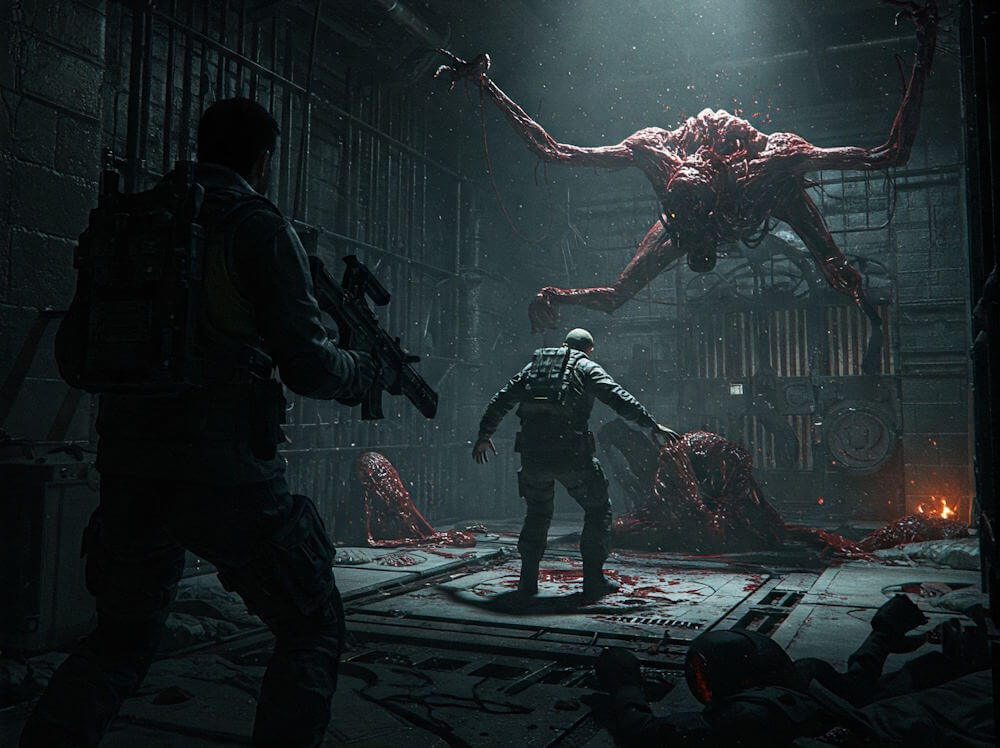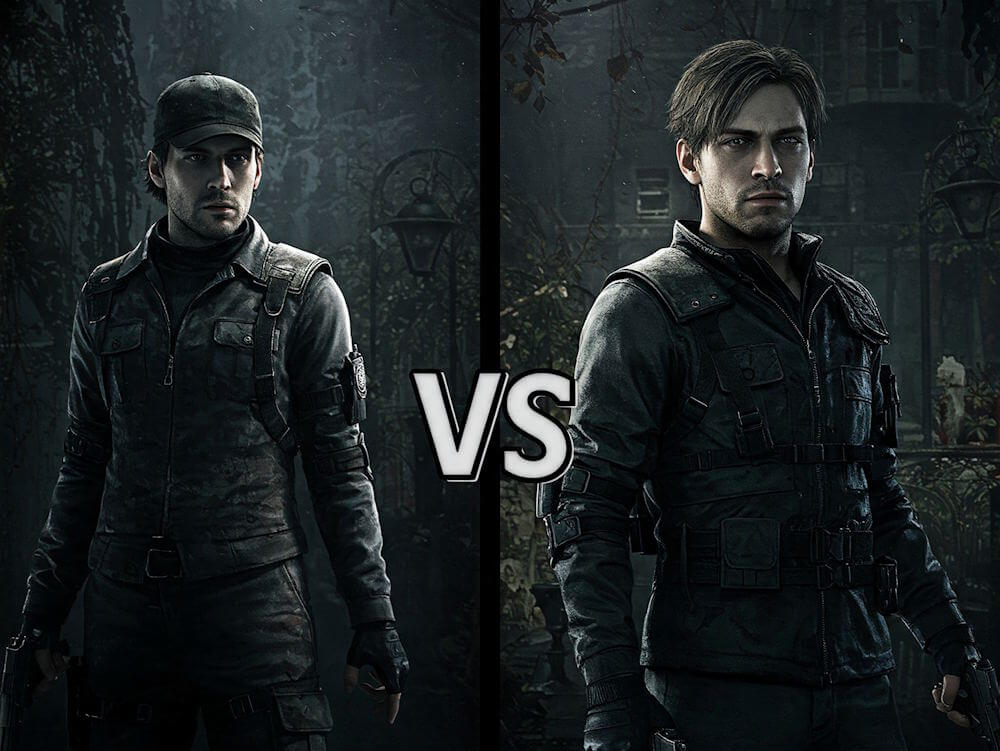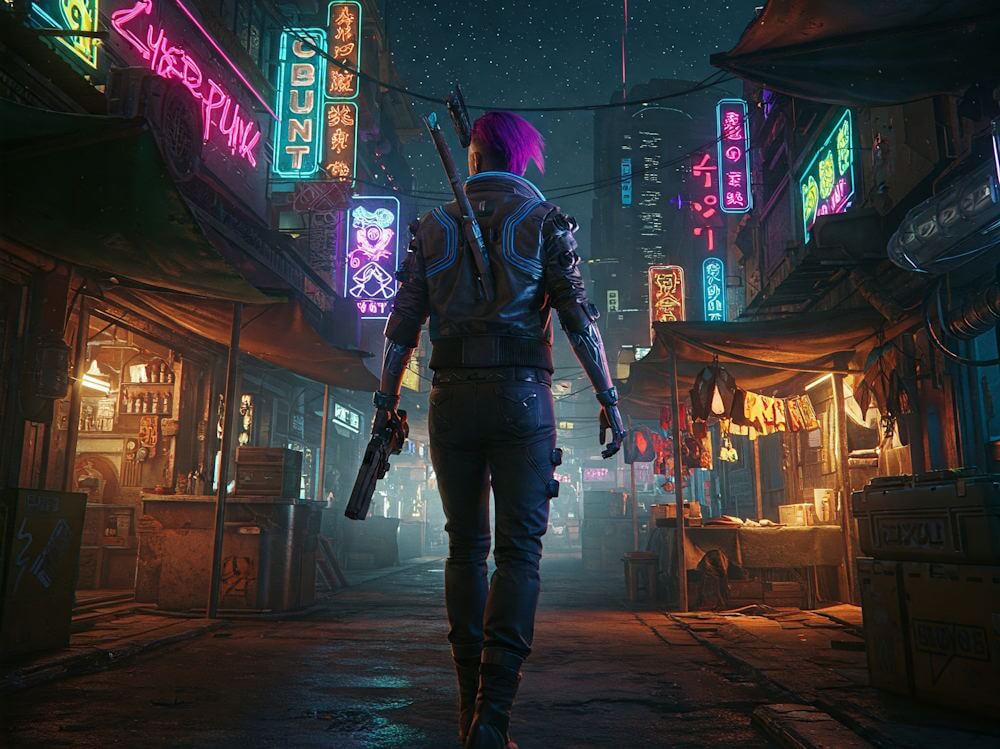The Callisto Protocol is a survival horror video game developed by Striking Distance Studios and published by Krafton. Scheduled for release in December 2022, this game has quickly gained attention in the gaming community due to its connections to the renowned Dead Space series. Setting itself apart in the horror genre, The Callisto Protocol not only builds upon the legacy of its predecessor but also introduces innovative gameplay mechanics and a gripping narrative that captures the essence of survival horror.
Creating the game are notable figures, including Glen Schofield, an industry veteran who co-created the original Dead Space. His experience in crafting immersive horror experiences significantly contributes to the anticipation surrounding The Callisto Protocol. The developers aimed to deliver an unsettling atmosphere, engaging storyline, and intense gameplay that pay homage to the legacy of Dead Space while forging a distinct identity.
Set in the year 2320, The Callisto Protocol unfolds in the Black Iron prison on Jupiter’s moon, Callisto. Players assume the role of Jacob Lee, a prisoner confronted with terrifying creatures and a labyrinthine environment. The narrative promises to explore themes of fear, peril, and survival within this eerie setting. By utilizing advanced graphics and audio technology, the game aims to create a truly immersive experience that resonates with fans of the horror genre.
The anticipation for The Callisto Protocol stems from a combination of nostalgia for the Dead Space series and a desire for fresh, innovative horror experiences. As players eagerly await its launch, the game stands poised to make a significant impact in the survival horror landscape, potentially attracting both longtime fans and newcomers alike.
A Brief History of Dead Space
The Dead Space franchise, launched in 2008 by Electronic Arts, has carved a significant niche within the survival horror genre, renowned for its compelling blend of science fiction and horror elements. The first installment, developed by EA Redwood Shores, introduced players to the terrifying confines of the USG Ishimura, a mining spaceship overrun by grotesque creatures known as Necromorphs. Its innovative gameplay mechanics, including unique dismemberment combat and an immersive audio experience, created a sense of tension and urgency that was unprecedented at the time.
Central to the success of Dead Space was its narrative depth, which combined elements of isolation, psychological horror, and a richly built universe. Players assumed the role of Isaac Clarke, an engineer drawn into a horrific situation, partially inspired by classic horror stories and modern science fiction. The lore surrounding the Necromorphs and the enigmatic Marker provided an intriguing backdrop that expanded through sequels and additional content, further enhancing player engagement. The franchise’s second installment, Dead Space 2, was released in 2011 and continued to develop Isaac’s harrowing story, incorporating more action and refining gameplay elements that were initially so well-received.
Moreover, Dead Space’s impact went beyond its own gameplay. It galvanized other developers to explore horror concepts in similar ways, pushing the boundaries of the genre. The unique positioning of Dead Space in the gaming landscape, characterized by its atmospheric design and intense narrative arcs, laid the groundwork for future horror titles, including The Callisto Protocol. With its foreboding environments and existential themes echoing throughout gameplay and story, Dead Space remains a benchmark for excellence in survival horror, illustrating the potential for immersive horror experiences in the gaming medium.
Game Mechanics and Innovations
The Callisto Protocol represents a significant evolution in survival horror gaming, introducing a range of innovative mechanics while echoing the legacy of its spiritual predecessor, Dead Space. Central to the player experience is the revamped combat system. Unlike traditional shooters, The Callisto Protocol emphasizes melee combat, encouraging players to engage enemies up close for a more visceral and intense interaction. This shift not only heightens the tension but also aligns with the game’s narrative themes revolving around survival in the face of overwhelming fear.
Environmental storytelling is another key feature that sets The Callisto Protocol apart. Players are submerged in the unsettling atmosphere of Black Iron Prison, where every corner harbors secrets waiting to be uncovered. Visually captivating environments enhance the narrative experience, drawing players deeper into the lore. Unlike Dead Space, which often relied on terminal logs or audio diaries, The Callisto Protocol intersperses its storytelling with dynamic environmental elements, allowing players to piece together the story through exploration and observation.
Furthermore, advancements in artificial intelligence have led to more unpredictable enemy behavior. The enemies in The Callisto Protocol exhibit heightened awareness and adaptability, creating a more immersive and challenging combat scenario. Rather than following predictable patterns, these adversaries can respond to player actions in real time, keeping gamers on their toes. This innovation not only amplifies the suspense but also fosters a more strategic approach to gameplay, as players must constantly reassess their tactics based on enemy movements.
In conclusion, The Callisto Protocol successfully integrates innovative game mechanics that both honor and expand upon the foundations laid by Dead Space. The emphasis on melee combat, rich environmental storytelling, and sophisticated AI creates a distinctive experience that stands out in the survival horror genre.
Setting and Atmosphere
The Callisto Protocol, positioned on Jupiter’s moon, Callisto, immerses players in a uniquely unsettling environment that serves as a critical factor in its horror experience. This setting, characterized by desolation and despondency, effectively creates a backdrop that heightens tension and evokes feelings of dread. The icy, volatile nature of Callisto complements the game’s narrative and accentuates the horror elements. The exploration of industrial complexes juxtaposed with the moon’s harsh, barren landscapes reinforces a sense of isolation, drawing players deeper into the chilling atmosphere.
In comparison with Dead Space, which is set aboard the USG Ishimura, The Callisto Protocol draws on various environmental elements that creatively mirror and diverge from its predecessor. The USG Ishimura’s claustrophobic confines and eerie, dimly lit corridors effectively captured a sense of entrapment. Similarly, Callisto’s environments are designed to provoke a similar claustrophobic anxiety but diverge in their broader contextualization of outer space horror. Vast external landscapes, alongside the claustrophobic interiors of the Black Iron Prison, amplify the player’s vulnerability, contrasting the earlier experience of Dead Space.
This atmospheric construction establishes an unsettling audio-visual narrative that echoes with dread. Subtle ambient sounds and lighting techniques contribute significantly to the immersive horror, creating an experience in which players constantly anticipate terrifying encounters. Utilizing skills in environmental storytelling, The Callisto Protocol employs its celestial setting to enhance the psychological elements of fear, drawing parallels with Dead Space while establishing its own distinct identity. The juxtaposition of natural and industrial environments ultimately serves to enrich the overarching tone of horror, ensuring players remain on edge as they navigate the treacherous terrain of Callisto.
Narrative and Themes
The narrative structure of The Callisto Protocol presents a complex and captivating storyline that mirrors and contrasts with the renowned Dead Space saga. At the core of the game is the protagonist, Jacob Lee, who finds himself imprisoned in the Black Iron Facility on the moon of Callisto. This setting not only serves to create a bleak atmosphere but also enables a rich exploration of survival horror elements. Particularly, as players navigate through the facility, they encounter grotesque transformations reminiscent of the Necromorphs from Dead Space, generating a sense of dread and urgency.
The themes explored in The Callisto Protocol delve into existential horror, human evolution, and ethical dilemmas associated with advanced technologies. The game raises profound questions about humanity’s capacity for brutality and the consequences of scientific hubris, similar to the themes presented in Dead Space. The narrative unfolds through increasingly tense moments, characterized by unexpected plot twists that serve to keep players on the edge of their seats. This approach to storytelling invites comparisons to Isaac Clarke’s harrowing journey, as both games delve into the psychological toll inflicted by monstrous entities and oppressive environments.
Character development is another critical element that enhances the narrative. Jacob Lee’s journey from a self-serving individual to a reluctant hero is portrayed through both gameplay mechanics and engaging cutscenes. Much like Isaac Clarke, Jacob must confront not only the external threats posed by the terrifying creatures but also his own fears and moral choices. Each interaction with supporting characters adds depth, revealing the human struggle against despair. Thus, the narrative of The Callisto Protocol intricately weaves together themes of horror, transformation, and the resilience of the human spirit, paralleling its spiritual cousin, Dead Space, while carving out its unique identity in the survival horror genre.
Visual and Audio Design
The Callisto Protocol, developed by Striking Distance Studios, showcases remarkable advancements in visual and audio design that enrich the overall horror experience. This game echoes the haunting aesthetic established by its spiritual predecessor, Dead Space, while simultaneously carving out its distinct identity through cutting-edge technology and immersive artistry.
The graphics in The Callisto Protocol are stunningly detailed, featuring highly realistic environments that evoke a sense of unease and isolation. The art direction is heavily influenced by themes of confinement and dread, with dimly lit corridors, atmospheric lighting, and intricate textures that reflect the game’s chilling atmosphere. The design of the interstellar prison, Black Iron, serves as a testament to the thoughtfulness in creating an immersive world that players can not only see but feel. Each visual element is crafted to enhance the psychological horror, drawing players deeper into the narrative.
Sound design plays a crucial role in shaping the chilling ambiance of the game. From the ambient noises echoing through the darkened halls to the unsettling sound effects accompanying each encounter with the game’s grotesque creatures, the auditory experience heightens tension and fear. The deliberate use of silence punctured by sudden, jarring noises creates an unpredictable environment, mirroring the audio techniques employed in Dead Space. Additionally, the voice acting, coupled with dynamic soundscapes, acts as a conduit for character connection and emotional investment, broadening the player’s experience.
In conclusion, the visual and audio design in The Callisto Protocol not only pays homage to the legacy of Dead Space but also pushes the boundaries of horror game design. The intricate graphics, compelling art direction, and chilling sound effects work in concert to create an unforgettable, immersive experience that resonates with horror enthusiasts. The meticulous attention to detail ensures that players are enveloped in a world where every sound, every shadow, and every visual element works to amplify the terror that lies within.
Critical Reception and Community Response
Upon its release, The Callisto Protocol garnered significant attention from both critics and the gaming community, largely due to its anticipated connection to the Dead Space franchise. Reviews from major gaming outlets highlighted the game’s immersive atmosphere and chilling horror elements, asserting that it successfully captured the essence of survival horror that fans of Dead Space cherish. On platforms like Metacritic, the game received a mixed to positive score, with players often praising its visuals, sound design, and the sense of dread it cultivates throughout the gameplay experience.
However, not all feedback was favorable. Some critics pointed out issues related to pacing and gameplay mechanics, arguing that while the game immerses players in a haunting narrative, it occasionally falters in engagement. This disparity in reviews spurred robust discussions among the community, with gamers debating whether The Callisto Protocol lived up to the legacy of its spiritual predecessor, Dead Space. Experienced fans of the genre tended to analyze the title through a lens of nostalgia, often comparing mechanics and storytelling techniques that were prominent in Dead Space.
Community response has been particularly passionate, as dedicated forums and social media platforms became hotbeds for discussions. Players shared their gameplay experiences, encouraged one another to explore different strategies, and expressed their admiration or disappointment. The comparison between The Callisto Protocol and Dead Space has not only fueled dialogue but also shaped expectations for future horror titles. Whether one sees The Callisto Protocol as a worthy successor or merely a spiritual cousin to Dead Space, it is evident that it has sparked interest and debate among horror game enthusiasts and newcomers alike. As the community continues to engage with the game, its legacy and impact within the survival horror genre remain to be fully realized.
Future Prospects and Potential Sequels
The Callisto Protocol, hailed as the spiritual successor to the iconic Dead Space series, has garnered significant attention since its release. As players immerse themselves in its chilling atmosphere and gripping narrative, there is an increasing curiosity regarding the game’s future and the possibilities for sequels or expansions. Given the upward trajectory of horror survival games, The Callisto Protocol stands at a pivotal juncture where the legacy of Dead Space may influence its evolution.
Current trends in the gaming industry suggest a growing appetite for immersive storytelling coupled with engaging gameplay mechanics. The success of franchises that build on strong narratives, such as Resident Evil and The Last of Us, illustrates that players are receptive to sequels that enhance the lore while introducing innovative elements. Therefore, The Callisto Protocol’s developers may consider adopting this approach for potential sequels, ensuring that they delve deeper into the unsettling universe they have created.
Furthermore, the demand for multiplayer experiences in games could lead to intriguing expansions. Players may appreciate cooperative modes or competitive challenges that explore different facets of the game’s universe. These expansions might also integrate new gameplay features, enabling both seasoned fans and new players to enjoy the horror experience together.
In addition to gameplay enhancements, significant focus may be placed on further developing characters and relationships, drawing from the rich narrative lineage established in Dead Space. Exploring backstories or alternative perspectives could provide players with a deeper understanding of the game’s inhabitants, amplifying emotional engagement.
Ultimately, the potential for sequels of The Callisto Protocol lies in balancing the haunting essence of its predecessor while embracing contemporary gaming trends. By leveraging its unique elements along with innovative experiences, the franchise could cultivate a lasting legacy in the horror gaming landscape.
Conclusion: The Legacy of Horror Gaming
As we draw our analysis of The Callisto Protocol, it becomes evident that this title stands as a significant entry within the horror gaming genre. Bridging the gap between the iconic horror elements established in Dead Space, this game not only pays homage to its predecessor but also introduces innovations that can redefine future experiences in this category. By incorporating chilling atmospheres, psychological horror, and visceral combat sequences, The Callisto Protocol enhances the player’s immersion in a world of fear and uncertainty.
The development team’s commitment to crafting a narrative steeped in dread, complemented by striking visuals and sound design, elevates the gaming experience significantly. The gameplay mechanics mirror the essence of survival horror, carefully balancing scarcity and choice, reminiscent of the tactics that made Dead Space a hallmark of the genre. This attention to detail not only honors the legacy of horror gaming but also sets a precedent for subsequent titles looking to explore similar themes.
As players venture into the dark confines of Callisto Station, they are confronted with an experience that invokes fear through unexpected encounters and a constant sense of vulnerability. The game’s ability to immerse players in a harrowing narrative confirms its rightful place in the lineage of horror gaming. The Callisto Protocol’s potential to inspire future releases is promising, ensuring that elements of psychological horror and intense survival themes remain at the forefront of game design.
Ultimately, The Callisto Protocol establishes itself as a modern incarnation of the terror and tension that defined the original Dead Space. Through its innovative approach to storytelling and gameplay, it resonates with both long-time fans and newcomers alike. The legacy of horror gaming continues to evolve, and The Callisto Protocol stands as a testament to the enduring power of fear in interactive entertainment, paving the way for future explorations within this thrilling genre.



